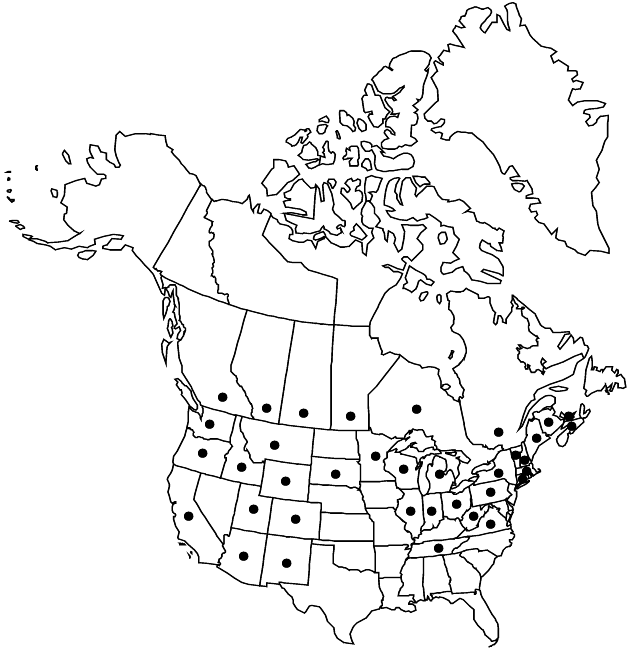Pseudognaphalium macounii
in J. T. Kartesz and C. A. Meacham, Synth. N. Amer. Fl., nomencl. innov. 30. 1999.
Annuals or biennials (often sweetly fragrant), 40–90 cm; taprooted. Stems stipitate-glandular throughout (usually persistently lightly white-tomentose distally). Leaf-blades (not crowded, internodes mostly 5+ mm) lanceolate to oblanceolate, 3–10 cm × 3–13 mm (distal linear), bases not clasping, decurrent 5–10 mm, margins flat to slightly revolute, faces weakly bicolor, abaxial tomentose, adaxial stipitate-glandular, otherwise glabrescent or glabrous. Heads in corymbiform arrays. Involucres campanulo-subglobose, 4.5–5.5 mm. Phyllaries in 4–5 series, stramineous to creamy (hyaline, shiny), ovate to ovate-oblong, glabrous. Pistillate florets 47–101 (–156). Bisexual florets 5–12 [–21]. Cypselae not ridged, ± papillate-roughened.
Phenology: Flowering July–Oct.
Habitat: Dry, open habitats, pastures, open woods or edges, roadsides
Elevation: 50–2600(–3000) m
Distribution

Alta., B.C., Man., N.B., N.S., Ont., P.E.I., Que., Sask., Ariz., Calif., Colo., Conn., Idaho, Ill., Ind., Maine, Mass., Mich., Minn., Mont., N.H., N.Mex., N.Y., Ohio, Oreg., Pa., S.Dak., Tenn., Utah, Vt., Va., Wash., W.Va., Wis., Wyo., Mexico
Discussion
Pseudognaphalium macounii is recognized by its stipitate-glandular, proximally glabrescent stems, bicolor and decurrent leaves, relatively large and many-flowered heads, and hyaline, shiny phyllaries. Reports of P. macounii from Texas are based on specimens of P. viscosum.
Selected References
None.